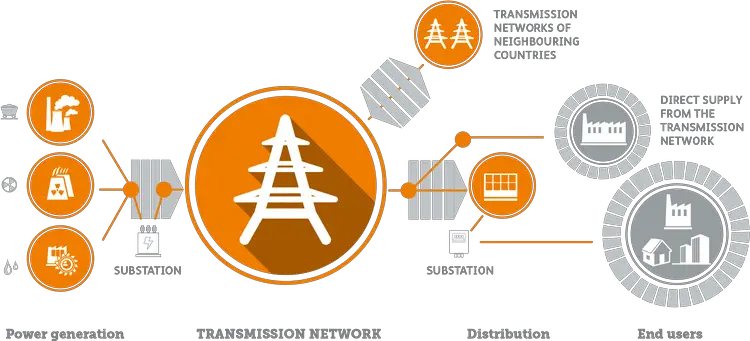The EV-olution of the power system
We are living in a time of great transition for the power system. As electric vehicles become increasingly popular and more efficient, the importance of transitioning to a sustainable power system is becoming ever clearer. The EV-olution of the power system promises not only a cleaner environment but also greater reliability, increased safety, and improved efficiency. In this blog post, we will take a look at the EV-olution of the power system and how it could shape our future. We’ll examine the implications for consumers, businesses, and utilities alike, as well as discuss some of the challenges that come with such an ambitious undertaking.

[lwptoc]
What is an EV?
Electric vehicles (EVs) are becoming increasingly popular as the technology improves and the cost of ownership decreases. In order to understand EVs, it is important to know how they work and what their benefits are.
EVs use electricity to power their motors, which makes them much more efficient than gas-powered vehicles. They also produce zero emissions, which is great for the environment. Additionally, EVs are often cheaper to operate than gas-powered vehicles, since you only need to charge them up rather than buying/refilling gas.
There are a few different types of EVs on the market today, including all-electric cars (like the Tesla Model S) and hybrid electric cars (like the Toyota Prius). All-electric cars run completely on electricity, while hybrid electric cars have both an electric motor and a gas engine.
The benefits of EV-olution make them a great choice for those who are looking for a more sustainable and affordable option for transportation.
First Complete Electric Power System – 1882
Thomas Alva Edison developed the first complete electric power system (including a generator, cable, fuse, metre, and loads) – the historic Pearl Street Station in New York City, which commenced operation in September 1882.
This was a direct current system comprised of a steam-engine-driven direct current generator giving power to 59 consumers within a 1.5 km radius. The load, which was entirely made up of incandescent lighting, was supplied with 110 V via an underground cable system.
Within a few years, similar systems were in place in the majority of the world’s major cities. Motor loads were added to such systems with the invention of motors by Frank Sprague in 1884. This was the start of what would become one of the largest industries in the world.
History of the EV
The history of the electric vehicle (EV) began in the mid-19th century, when electricity was first used as a means of powering locomotives and carriages. The first EVs were powered by lead-acid batteries, which were bulky and heavy. In 1887, the first EV was built by Scottish inventor Robert Davidson. This EV had a range of just over 10 miles (16 km) and a top speed of 12 miles per hour (19 km/h).
In 1896, Ferdinand Porsche designed and built the first gasoline-electric hybrid car. This car had a range of 30 miles (48 km) and a top speed of 35 miles per hour (56 km/h).
In 1900, the Australian inventor David Swan built the first EV-olution with a nickel-cadmium battery. This battery was much lighter than lead-acid batteries, and Swan’s EV had a range of 60 miles (97 km).
In 1912, the American Charles Kettering invented the lead-acid battery-powered self-starter, which made it possible for EVs to start without having to be cranked by hand.
In 1917, Henry Ford introduced the Model T, which was powered by an internal combustion engine. The Model T was mass-produced and very popular; however, it did not have enough power to climb hills easily, so many people continued to use EVs for city driving.
In 1918, William Morrison built the first successful mass-produced
How do EVs work?
Electric vehicles (EVs) are powered by electricity from batteries. The electricity is stored in the batteries and then converted into mechanical energy by the vehicle’s motor.
EV-olution have many benefits over traditional gasoline-powered vehicles. They emit no pollutants, they’re more efficient, and they have a lower operating cost.
The main drawback of EVs is that their range is limited by the amount of energy that can be stored in their batteries. However, advances in battery technology are steadily increasing the range of EV-olution.
What Is EV-olution
As the electric vehicle (EV) market continues to grow, the power system must evolve to accommodate this new load. The increased penetration of EVs will require changes to the way the power system is operated and controlled.
The EV-olution of the power system is a necessary transition to accommodate the growing number of EVs on the road. This evolution will require changes to the way electricity is produced, transmitted, and distributed. It will also necessitate new technologies and approaches to managing the power grid.
The goal of this transition is to ensure that the power system can accommodate the increased demand from EVs while maintaining reliability and delivering affordable electricity to all consumers.
Types of EVs
Electric vehicles come in many shapes and sizes, from cars and trucks to buses and trains. EVs can be powered by a variety of energy sources, including batteries, fuel cells, and solar panels.
EV-olution are becoming increasingly popular as the cost of batteries and other EV components continue to fall. In addition, EVs offer a number of environmental benefits over traditional gasoline-powered vehicles. EVs produce no emissions, which can help improve air quality and reduce greenhouse gas emissions.
There are four main types of EVs: battery electric vehicles (BEVs), hybrid electric vehicles (HEVs), plug-in hybrid electric vehicles (PHEVs), and fuel cell electric vehicles (FCEVs). each type of EV has its own unique benefits and drawbacks.
BEVs are powered solely by electricity from batteries. BEVs have a range of around 100 miles before needing to be recharged, which can take several hours. EV-olution are typically more expensive than other types of EVs, but they offer the longest range and the shortest recharge time.
HEVs combine an internal combustion engine with an electric motor. HEVs typically have a shorter range than BEVs, but they can use both gasoline and electricity to power the vehicle. HEV batteries can also be recharged by regenerative braking, which helps extend the battery’s life span.
PHEVs are similar to HEVs, but they have a larger battery that can be plugged into an external power source to recharge
Benefits of EVs
Electric vehicles (EVs) have many advantages over traditional gas-powered vehicles. EV-olution are cheaper to operate and maintain, they emit no pollutants, and they have a much smaller environmental impact than gas-powered vehicles.
EVs are powered by electricity, which is a clean and renewable resource. Electricity is also cheaper than gasoline, so operating an EV costs less than operating a gas-powered vehicle. Maintenance costs for EVs are also lower than for gas-powered vehicles, since there are no fluids to change and no engine to tune.
EVs emit no pollutants, making them much cleaner than gas-powered vehicles. They also have a much smaller environmental impact than gas-powered vehicles. EVs don’t produce emissions from tailpipes, and the electricity they use doesn’t release emissions into the atmosphere.
Challenges of EVs
The challenges of EVs are many and varied, but can be broadly broken down into two main categories.
Cost: EV-olution are currently more expensive to purchase than traditional gasoline cars. This is due to a variety of factors, including the high cost of batteries and the fact that EVs. However, as battery technology continues to improve and costs come down, it is expected that the price of EVs will become more competitive with gasoline cars. In addition, government incentives (such as tax breaks) can help offset the higher upfront cost of an EV.
Infrastructure: One of the main challenges facing EV-olution is the lack of charging infrastructure. Unlike gasoline cars which can be refueled at any gas station, there are far fewer places to charge an EV. This means that range anxiety – the fear of being stranded without a charge – is a major concern for potential EV owners. However, as the number of EV-olution on the road increases, it is expected that charging infrastructure will also gradually improve.
Read Our Article
Honda Electric Cars Pakistan: The New Honda 2023
The future of EVs
It is clear that the world is moving towards a more electrified future. The transportation sector is one of the key areas that is undergoing this change.
There are a number of reasons for this shift towards EVs. Firstly, they are much cleaner than traditional petrol or diesel vehicles, meaning they have far less of an impact on the environment. Secondly, they are becoming increasingly cheaper to purchase and operate, as battery technology continues to improve and charging.
Looking to the future, it is clear that EVs will play an increasingly important role in the power system. As the number of EVs on the road grows, so too will their collective demand for electricity. This increase in demand will need to be managed in order to maintain a stable and reliable power system.
One way to do this is by increasing the amount of renewable energy generation on the system. This will not only help to meet the increased demand from EVs, but will also help to reduce emissions from the power sector as a whole. Another option is to introduce new pricing schemes that incentivise EV owners to charge their vehicles at times when there is spare capacity on the grid.
Whatever approach is taken, it is clear that EVs will have a major impact on the future of the power system. With their growing popularity and increasing demand, it is essential that we manage their integration in a way that ensures a sustainable and reliable power supply for all.
Conclusion
The power system as we know it is changing. The rise of electric vehicles (EVs) is one of the key drivers of this change. EVs are becoming more popular every year, and they are starting to have a significant impact on the power system.
As EV-olution become more common, the demand for electricity will increase. This will put strain on the power system, and may lead to blackouts or other problems. To avoid this, utilities need to invest in upgrading the power grid.
In addition, EVs can help to improve the efficiency of the power system. When charging their batteries, EVs can provide energy back to the grid. This can help to meet peak demand and reduce overall energy consumption.
Overall, EVs are having a major impact on the power system. We need to make sure that our power grid is up to the task of meeting increased demand.

